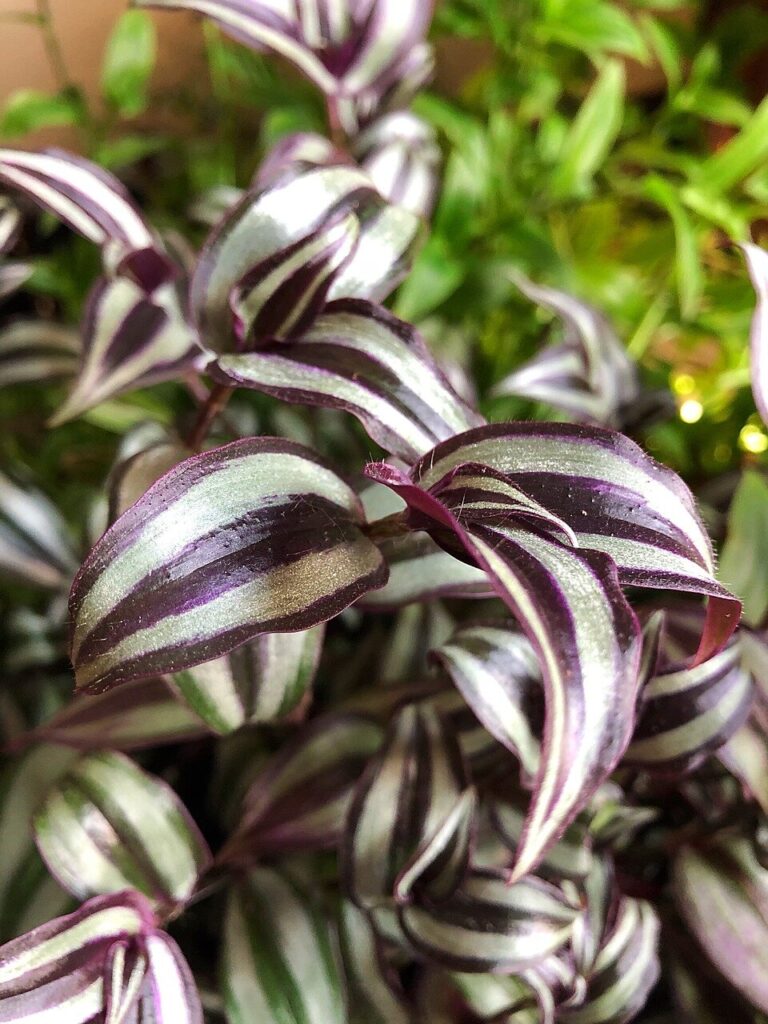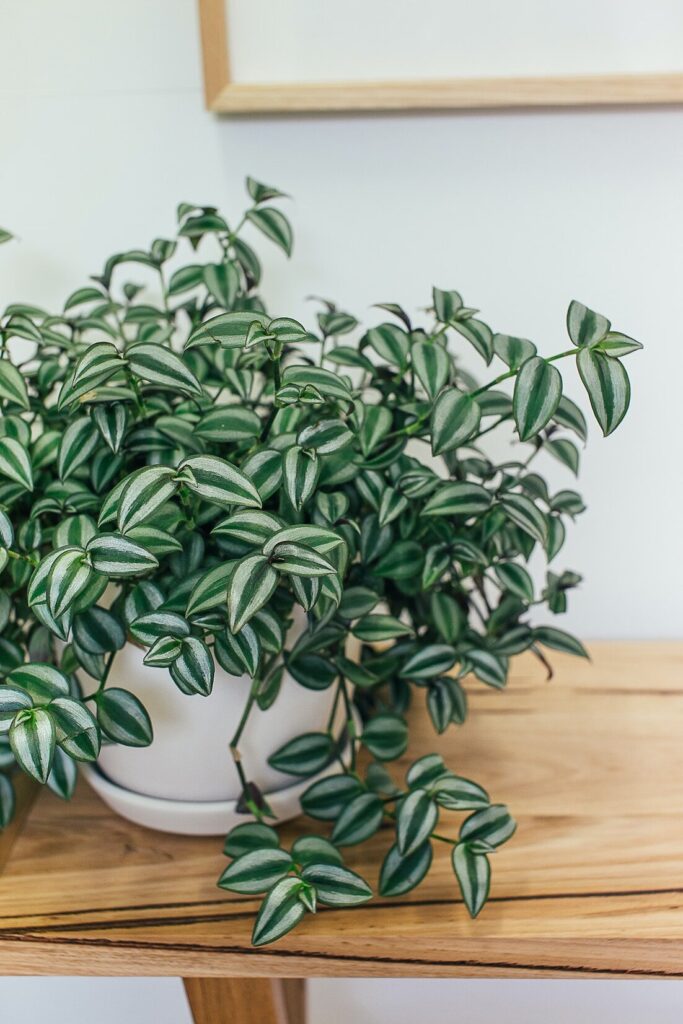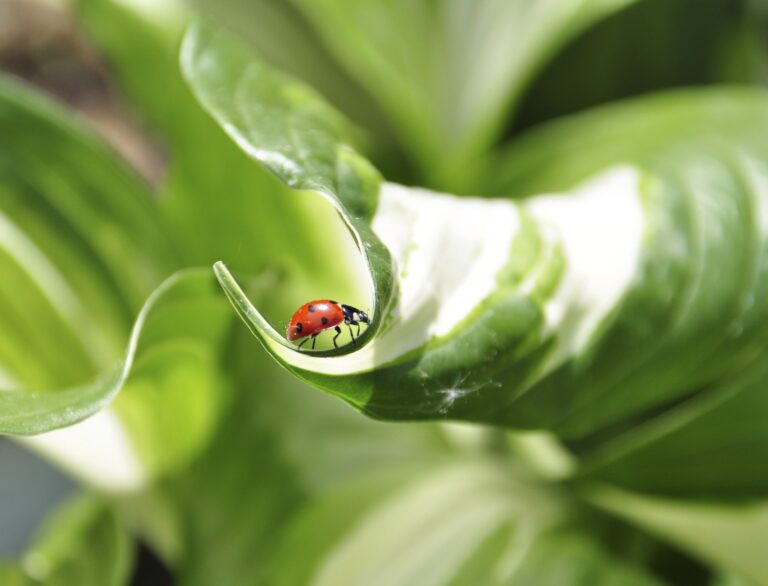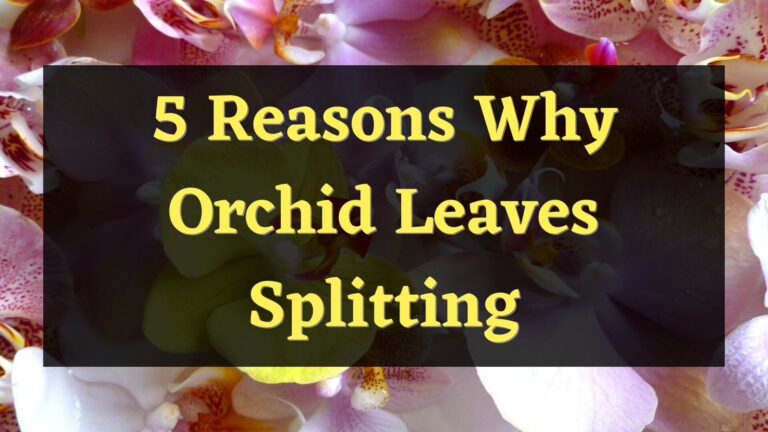The most practical and efficient method of propagating a Wandering Jew plant is through stem cutting. With a little reading, you will be able to grow this plant on your own. I will teach you how to propagate a wandering jew plant by using its stem in two different ways; planting it in soil and placing it in water.
About Wandering Jew Plant
Wandering Jew, formerly known as Zebrina Pendula and has the scientific name of Tradescantia Zebrina. Wandering Jew is also popularly known by its common names: silver inch plant and wandering dude.
The plant is very popular with gardeners for its foliage. It is also super easy to grow due to its quick growth rate. The plant is often used as a warm ground cover during winter but is often grown indoors in other places.
Wandering Jew has beautiful zebra-patterned leaves that are green in color with purple stripes and a silvery sheen on them. Depending on the plant’s variety, its leaves can be solid or variegated. The plant also produces a small but beautiful flower with three petals. The colors of these flowers depend on the plant’s variety but are often white or violet.

Propagating Wandering Jew Plant using Stem Cuttings
While stolons, seeds, and tubers are all viable ways to propagate a Wandering Jew plant, stem cutting is the most efficient method to use. Not only is it the most effective, but it is also very easy and simple. A stem cutting from a Wandering Jew can be grown in either soil or water.
Here are the steps for propagating Wandering Jew from stem cuttings:
Propagate Stem Cuttings in Soil
Taking your cutting
When taking a stem from your wandering jew plant, cut it just below the nodes with sterilized shears. By using sharp and clean shears or scissors, you lessen the chance of your plant’s stem rotting and increase the chances of it successfully growing new roots.
Propagate cuttings in soil
Let your stem establish roots in the soil, and look for soil that is best suited to a wandering Jew. Make sure to select soil that has a good drainage system. You wouldn’t want soil that is heavy because too much moisture will cause your stem to rot before it even has a chance to grow its root system.
Dampen your soil before planting your cutting in it. You can place your soil in a large bin with water and soak it in there for a few minutes to break apart any clumps of soil. After a few minutes, take out the soil and soak it as much as you can. Then place that soil in the pot where you will plant your cutting.
Dig a shallow hole in the middle of your soil mixture and insert your cutting. Before planting, you can also choose to dip your cutting in a rooting hormone. The rooting hormone will help hasten the growth of your cutting’s root system.
Transplanting
Once the roots of your plant have grown a couple of inches long, you can then transplant it into a pot that is filled with a well-draining soil mix. With the cutting that was planted in the soil, you can check if it has already established its root system by gently tugging on it and observing if it offers resistance.
Your young plant will be able to thrive indoors as long as you put it in a brightly lit room. Make sure to keep your young plant from being exposed to direct sunlight. Maintain the room temperature between 50 and 80 °F, as Wandering Jews prefer a more temperature-controlled environment.
Watering
The best sign of when you need to water your plant is the dryness of the soil around it. Once the upper layer of the soil begins to dry, do not hesitate to water it. And it is also advised to keep the soil around it too wet; otherwise, it will lead to your plant’s roots rotting. You can water your plants simply by using the bottom watering method.
Fertilizing
Although Wandering Jew plants don’t really have a need for fertilizer to grow healthy. It would still have many benefits if you applied high-quality fertilizers from time to time. This will allow your plant to hasten its growth and increase the chance of your cutting successfully propagating.
Propagating stem cuttings in water
Taking your cutting
When taking a stem from your plant, cut it just below the nodes with sterilized shears. By using sharp and clean shears or scissors, you lessen the chance of your plant’s stem rotting and increase the chances of it successfully growing new roots.
Propagate cuttings in water
The first steps of rooting a Wandering Jew in water are a little bit different than in soil. Find a container, preferably one made of plastic, and fill it with water. Mix a root hormone powder to enhance the growth of your cutting’s root system.
When putting your cutting in the container, make sure that the base of your cutting does not touch the container’s base. Change your water every three to four days to maximize the cutting’s health and growth speed.
Transplanting
Once the roots of your plant have grown a couple of inches long, you can then transplant it into a pot that is filled with a well-draining soil mix. With the cutting that was planted in the soil, you can check if it has already established its root system by gently tugging on it and observing if it offers resistance.
Your young plant will be able to thrive indoors as long as you put it in a brightly lit room. Make sure to keep your young plant from being exposed to direct sunlight. Maintain the room temperature between 50 and 80 °F, as Wandering Jews prefer a more temperature-controlled environment.
Watering
The best sign of when you need to water your plant is the dryness of the soil around it. Once the upper layer of the soil begins to dry, do not hesitate to water it. And it is also advised to keep the soil around it too wet; otherwise, it will lead to your plant’s roots rotting. You can water your plants simply by using the bottom watering method.
Fertilizing
Although wandering jew plants don’t really have a need for fertilizer to grow healthy. It would still have many benefits if you applied high-quality fertilizers from time to time. This will allow your plant to hasten its growth and increase the chance of your cutting successfully propagating.
Can you propagate a Wandering Jew from just its leaf?
No, you cannot propagate a Wandering Jew by using its leaves. A leaf of a Wandering Jew won’t be able to fully establish its root system on its own if it is the only thing that you plant.
How fast does a Wandering Jew establish its root?
When you propagate a wandering Jew plant through stem cuttings, it will take about two weeks for it to be able to grow a root. Establishing a strong root system would take about two to three weeks, depending on how you propagated your Wandering Jew cutting.

Conclusion
The methods of propagating a Wandering Jew plant are so simple that even inexperienced gardeners can do it. It is worth the effort to propagate your own Wandering Jew plant, especially if you don’t have one yet in your garden. But if you are planting them in your garden, it is important to make sure that it has enough shade that it needs so that its leaves won’t burn from being directly exposed to the sun.

Elizabeth Mcmillan is a passionate gardener with a strong interest in plants. She used to be a teacher, but Elizabeth has spent the last few years immersing herself in the world of plants, learning about their biology and cultural value and trying out different ways of growing them in her own garden. Elizabeth Mcmillan loves indoor plants, succulents, and cacti, and her friends and family know her as a plant care expert.







